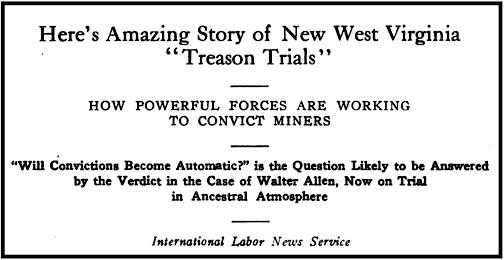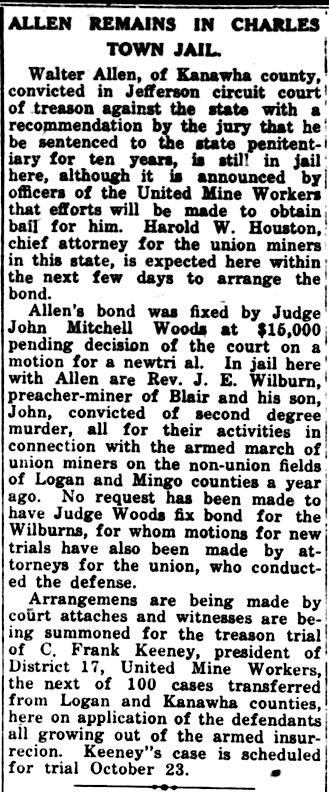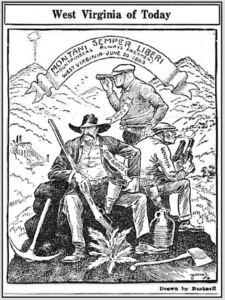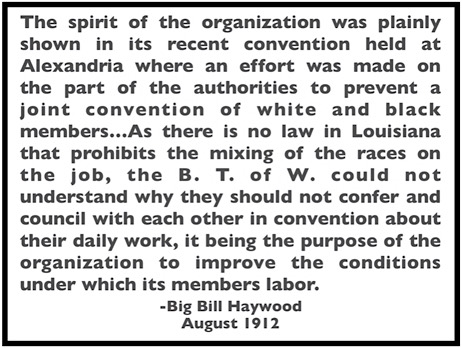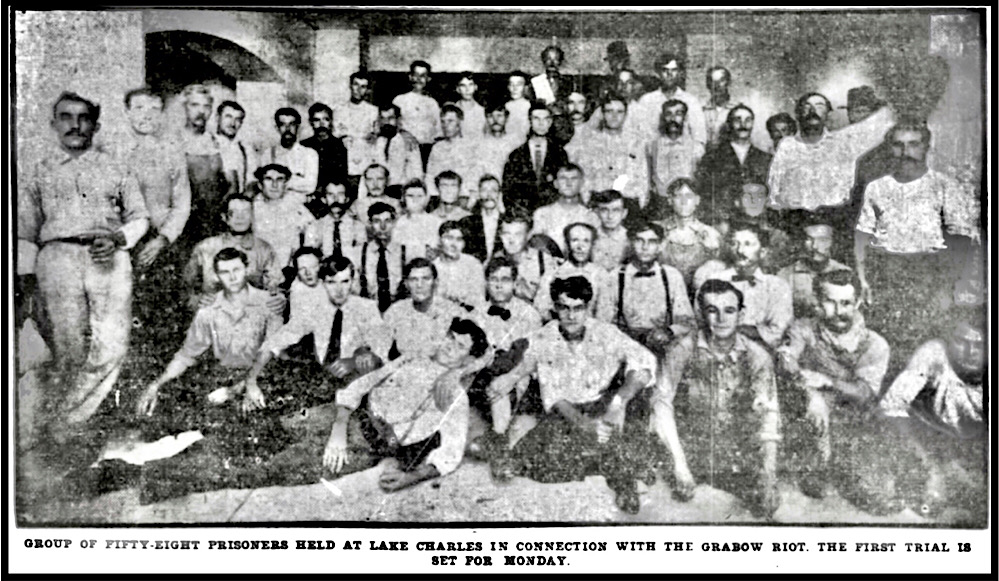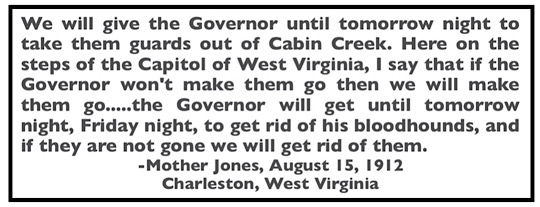 —————
—————
Hellraisers Journal –Wednesday October 16, 1912
“This Is War and War Is Hell” by John W. Brown, Part II
From The Coming Nation of October 12, 1912:
[Part II of III]
Making and Breaking Contracts
On May 1st [1912], a compromise was reached in which the miners agreed to accept one-half of the Cleveland scale and the recognition of their union. This was accepted by a joint commission composed of representatives of the operators and the miners’ union.
On May 2d, the Paint Creek Collier Co., one of the parties to the contract, repudiated the agreement, thereby forcing their men either to scab or go on strike. The men chose the latter and on the 8th of May the first detatchment of “Baldwin guards” was sent to Paint Creek and following their arrival there, a reign of terror was established which has no parallel outside of barbarous Mexico or darkest Russia.
A chronicle of the crimes committed by these licensed and merciless cutthroats would fill a volume in itself. On June the 5th, eight of them were indicted before a grand jury and held for murder in the first degree, and were released on a bond of $3,000 each. A wholesale merchant and beneficiary of the coal barons acted as their bondsman.
The miners at Mucklow, Burnwell and several other camps were dispossessed under the “master and servant” decision of Judge Burdett. The miners made application for an injunction to restrain the operators from evicting them but Judge Burdett after a week or more of judicial jugglery refused to issue the order, notwithstanding such an order had been granted in Fayette county which is in the same mining district.
Battle for Tented “Homes”
The dispossessed miners secured tents and settled at Holly Grove at the mouth of Paint Creek. The coal barons and their hired assassins determined to break the union spirit and to drive the union men out of the district and opened fire on the tents at Holly Grove, July 25th. This was more than human endurance could stand and to this last outrage the miners retaliated and fought back with such weapons as they had and for two days the battle raged in and around Mucklow and just how many lives were lost will never be known.
About this time “Mother Jones,” the avenging Nemesis of the miners, appeared on the scene and with her came a new hope, a new courage and a new consciousness to the coal miners. There is something powerful about this old gray haired woman. When the coal barons hear her name they tremble. Barehanded and alone, Mother Jones walked up to the mouth of the gattling guns on Cabin Creek and demanded of the hireling that turned the crank that she be allowed to see her boys. Mother saw her boys and held a mass meeting in the Cabin Creek district and organized the miners and on August 7th the miners of Cabin Creek walked out on strike with their brothers of Paint Creek.
On August 29th a Baldwin guard drunk and disorderly shot a man by the name of Hodge at Dry Branch. This precipitated a general fight in which Hines, the instigator, was killed and several others wounded. On September 1st, Governor Glasscock ordered out the militia and declared martial law and just what the end will be it is hard to say at this time.
Governor Glasscock, in an interview with the newspaper reporters a few days ago admitted that he is not the governor of West Virginia, that the government of the state is controlled by an “infernal legislative lobby” and an “invisible power.”


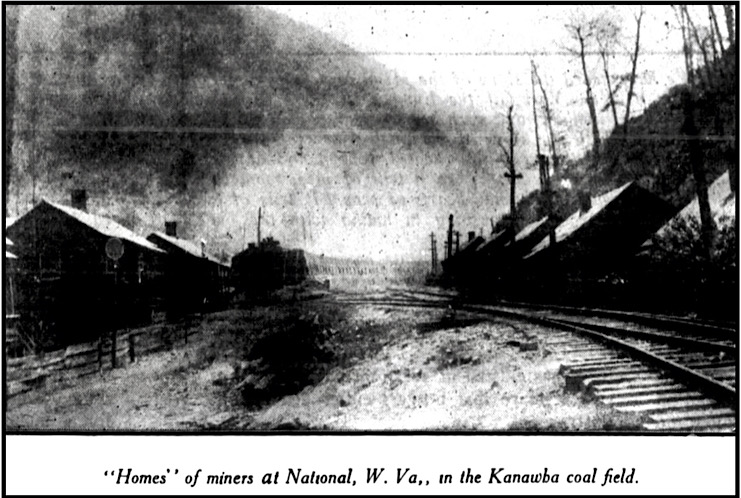
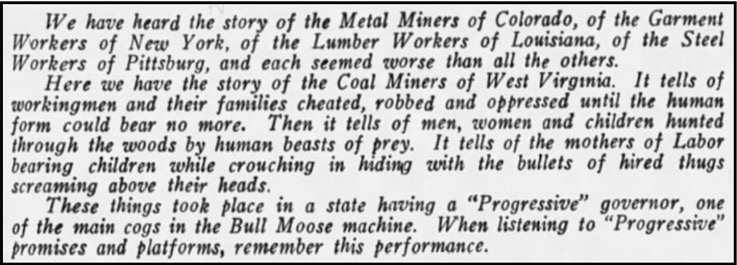 —–
—–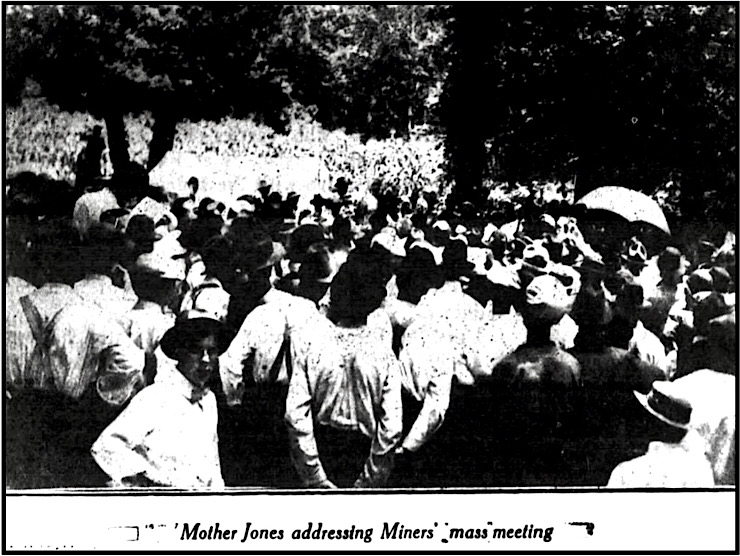
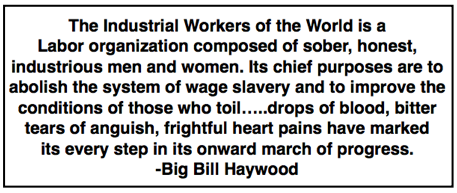 —————
—————
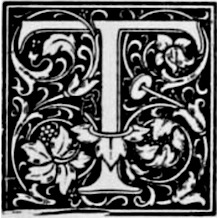 wo of our men-Caesar Tabib and Edward Quigley—are suffering from tuberculosis aggravated if not contracted in the Sacramento jail where they spent a year before they were brought to trial. Because of their physical condition, these two men were prevailed on by the rest of us to make application for release, for “clemency,” but their application was coldly refused by the Department of Justice. Apparently they are not yet near enough to death to make it “safe” to release them.
wo of our men-Caesar Tabib and Edward Quigley—are suffering from tuberculosis aggravated if not contracted in the Sacramento jail where they spent a year before they were brought to trial. Because of their physical condition, these two men were prevailed on by the rest of us to make application for release, for “clemency,” but their application was coldly refused by the Department of Justice. Apparently they are not yet near enough to death to make it “safe” to release them.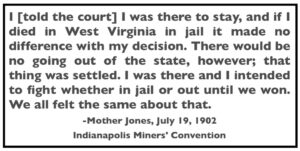 —————
—————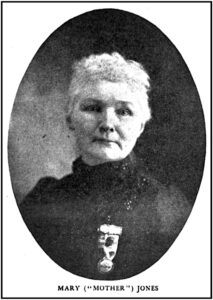
 —————
—————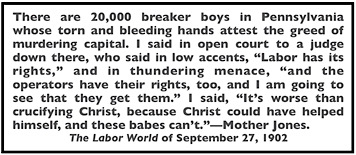 —————
—————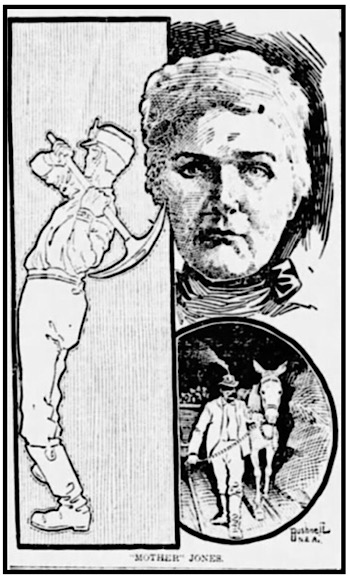
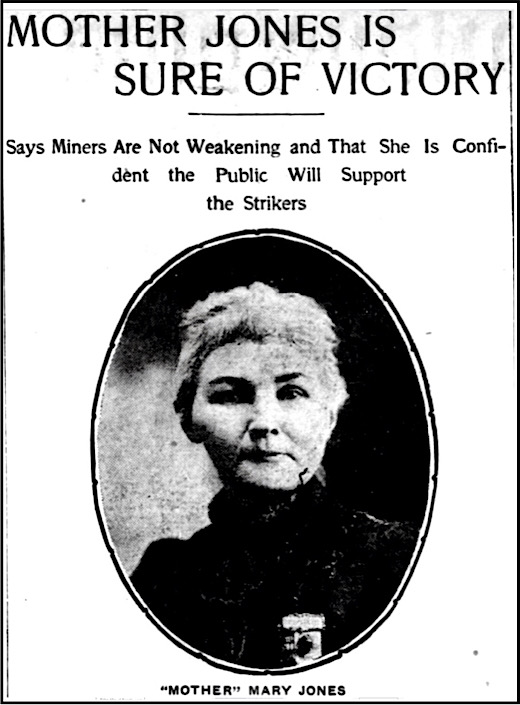
 —————
—————